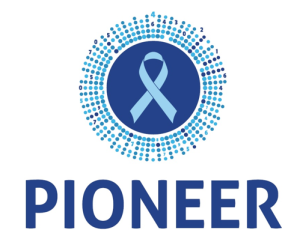In May, I joined several SAS colleagues, academics, clinicians, pharmaceutical companies, and other information and technology specialists for the first-ever IMI PIONEER Hackathon for prostate cancer research. A few weeks later, as I watched the SpaceX launch on TV, it occurred to me that space trips and cancer research have something in common. An immense amount of work, preparation, and trial and error take place behind the scenes before the public gets to celebrate a launch or breakthrough. In this post, I’ll share a little from behind the scenes of the IMI PIONEER project.
Prostate cancer a growing threat
In Europe, PCa accounts for 9% of all cancer deaths among men. Moreover, the socio-economic burden associated with PCa is predicted to dramatically increase in the coming years due to our ageing population. In response, the IMI PIONEER project began in 2018 to address several unresolved critical questions regarding screening, diagnosis and treatment.
IMI PIONEER is committed to harnessing the power of big data and analytics to transform the field of prostate cancer research from the perspective of all relevant stakeholders. This includes clinicians, pharmaceutical companies, payers and – most importantly – patients. It’s also part of IMI’s Big Data for Better Outcomes Programme (BD4BO).
“Together we can ensure each individual patient receives the right treatment for them at the right time.” - Prof. James N’dow, PIONEER Coordinator
After joining IMI as an EFPIA Partner in Research, we at SAS were delighted to be accepted as part of one of the largest public-private life sciences consortia, investing an in-kind contribution to SAS’ first IMI project. The project is a clear fit for our big data analytics strengths (people and software), as well as SAS company values.
Looking back
In our kick-off meeting in Amsterdam in May of 2018, I had the opportunity to meet the IMI PIONEER leadership and all consortium members. We began by hearing about each other’s backgrounds, skills and motivators for participation in the project. Then we focused on becoming more comfortable with contributing to IMI projects. And finally, we took a deep dive into 50-plus priority research questions that the consortium would address. The positive energy of all consortium members, and especially the IMI PIONEER leadership, was inspiring and contagious. It was definitely a great way to get such a complex project started!
Over the past two years, each of the project work packages has made a significant contribution with a lot of collaboration across the different workstreams, including our work package WP5 (Data Analytics) – led by Bertrand De Meulder (EISBM) and Robert Snijder (Astellas).
Milestone met
Earlier this year, a significant milestone was realised for IMI PIONEER after the first data sources were loaded on to the central platform. The second wave of data for upload to the platform has already been prioritised and is ready for mapping to the OMOP common data model. Many more data sharing agreements are being signed for both the central as well as federated data models. In the federated data model, data does not leave the data owner’s environment, analytics are running locally, with results sent back to the central environment.
More recently we participated in the first PIONEER Virtual Hackathon. The goal of the one-day hackathon was to focus on one specific research question and demonstrate for the first time the full potential of IMI PIONEER. The event brought together data analysts, data experts, creative people and domain experts (e.g., clinicians) participating in PIONEER or other related initiatives. The main objectives were to get a better understanding of the available data using the ODHSI ATLAS toolbox and producing preliminary analyses using ATLAS, R, SAS advanced analytics and JMP Pro.
At the end of the day, we managed to decipher and extract a number of interesting cohorts from the OMOP data structures. We merged them into a form appropriate for statistical analysis, create tabular and graphical summaries, and fit Cox regression models. Not bad for one day!
Lessons learned and looking forward
We need to take several actions to use the full potential of PCa big data, visualisation capabilities, advanced analytics and the brainpower of all experts in this consortium. Resolving these will be beneficial for the study-a-thon week we are planning for later this year (Q4). Action items include:
- Disease definitions – translate disease definitions into cohort definitions and outcome variables.
- Data sources – gain a better understanding of all available data sources.
- Data format – gain a better understanding of where to find specific data within the mapped OMOP data model.
- Toolbox – enable all data scientists on the ODHSI ATLAS toolbox and SAS advanced analytics. Understand also integration possibilities (e.g., SWAT package for Python, SWAT package for R) to get the best of both worlds.
- Federated data access – ensure access to all federated data sources for both R and SAS advanced analytics.
Collaboration is key
Overall, being a part of the virtual hackathon was a great experience. We had excellent collaboration and partnering between all private and public consortium attendees. Running such a complicated event virtually is a major achievement. Kudos especially to Carl Steinbeißer (collaborate.eu) and Robert Snijder (Astellas) for leading the hackathon efforts. Also a special thanks to consortium partners TheHyve (Kees Van Bochove, Marinel Cavelaars, Artur Fazullin, Maxim Moinat and Stefan Payralbe) for the close collaboration during the preparation phase for the hackathon environment.
Finally, I also want to thank my other SAS team members who actively participated: Mark Lambrecht, Russ Wolfinger, Sherrine Eid, David Olaleye, Matteo Landrò, Veronique Van Vlasselaer and, last but not least, Frederik Vandenberghe.
I hope this first blog post stimulates readers’ interest to know more about this exciting project and the progress we are making as a public-private consortium. This hackathon was PIONEER’s first. But we hope to have many more in the coming years as we continue to unlock the potential of the PIONEER big data platform. Stay tuned for the study-a-thon blog later this year!
If you want to hear more on similar SAS’ Data for Good projects, you can find a lot of good read on our theme pages. For all the latest PIONEER news, follow the project on Twitter @ProstatePioneer.
PIONEER is funded through the IMI2 Joint Undertaking and is listed under grant agreement No. 777492. IMI2 receives support from the European Union’s Horizon 2020 research and innovation programme and the European Federation of Pharmaceutical Industries and Associations (EFPIA).


